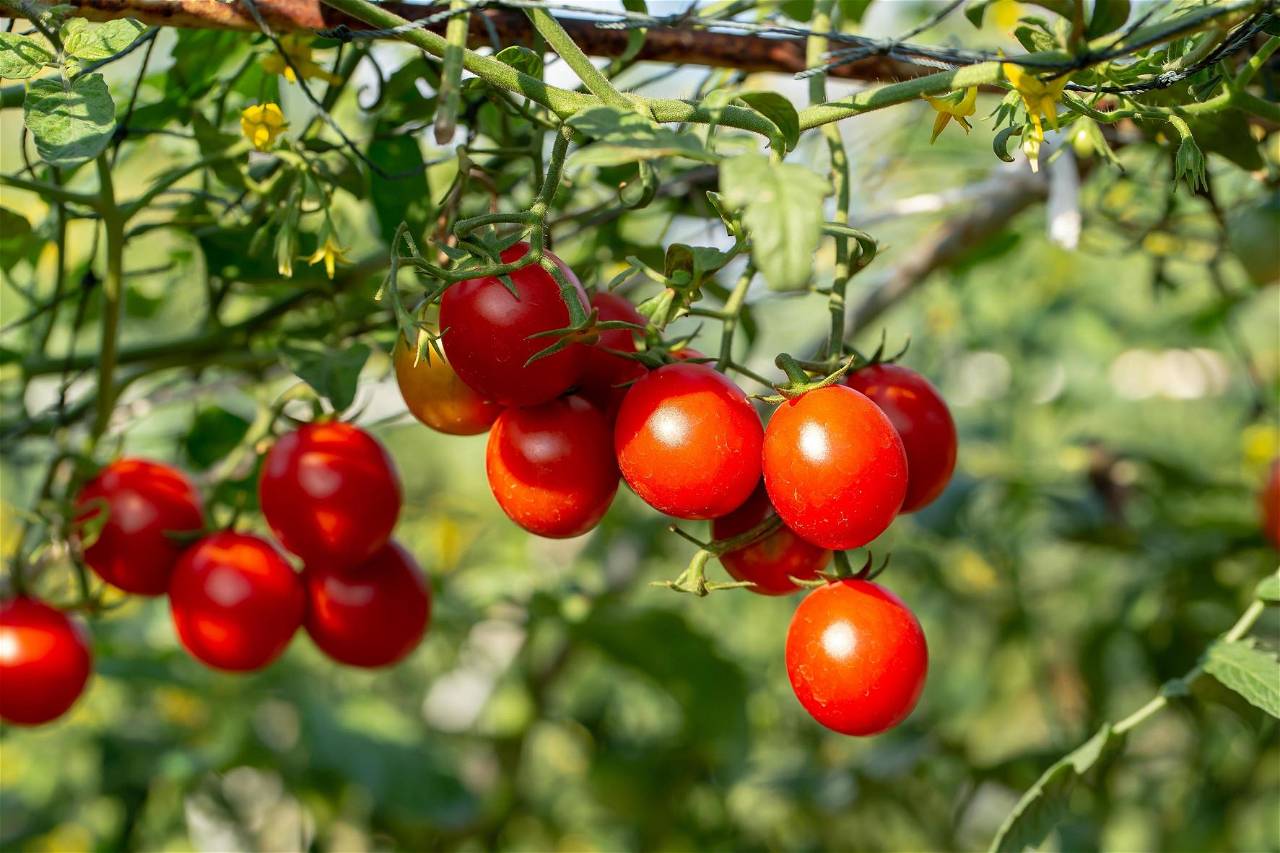
Tomatoes gene-edited to produce vitamin D, the sunshine vitamin, could be a simple and sustainable innovation to address a global health problem. The researchers used gene editing to turn off a specific molecule in the plant's genome, which increased provitamin D3 levels in both tomato fruit and leaves. When exposed to UVB light, it was converted to vitamin D3.
Nature Plants published an article titled 'Biofortified tomatoes provide a new route to vitamin D sufficiency.'
Research Findings:
Vitamin D is produced in our bodies as a result of skin exposure to UVB light, but the primary source is food. This new biofortified crop could benefit millions of people suffering from vitamin D deficiency, a growing problem linked to an increased risk of cancer, dementia, and many other leading causes of death. Vitamin D deficiency has also been linked to an increase in the severity of Covid-19 infection, according to research.
Tomatoes naturally contain very low levels of one of the vitamin D3 building blocks, provitamin D3 or 7-dehydrocholesterol (7-DHC), in their leaves. Normally, provitamin D3 does not accumulate in ripe tomato fruits.
The John Innes Centre's Professor Cathie Martin's group used CRISPR-Cas9 gene editing to change the genetic code of tomato plants so that provitamin D3 accumulates in the tomato fruit. The edited plants' leaves contained up to 600 ug of provitamin D3 per gramme of dry weight. Adults should consume 10 ug of vitamin D each day.
When growing tomatoes, the leaves are usually discarded, but those from the edited plants could be used to make vegan-friendly vitamin D3 supplements or food fortification.
"We've shown that using gene editing, you can biofortify tomatoes with provitamin D3, which means tomatoes could be developed as a plant-based, sustainable source of vitamin D3," said Professor Cathie Martin, the study's corresponding author.
"One billion people worldwide, including 40% of Europeans, are vitamin D deficient. We are not only addressing a major health issue, but we are also assisting producers because tomato leaves, which are currently wasted, could be used to make supplements from gene-edited lines."
Previous research looked into the biochemical pathway of how 7-DHC is used in the fruit to make molecules and discovered that a specific enzyme called Sl7-DR2 is in charge of converting this into other molecules.
To exploit this, the researchers used CRISPR-Cas 9 to turn off the Sl7-DR2 enzyme in tomato, allowing 7DHC to accumulate in the tomato fruit. They measured the amount of 7-DHC in the leaves and fruits of these edited tomato plants and discovered a significant increase in levels of 7-DHC in both the leaves and fruit of the edited plants. The 7-DHC accumulates in both the tomato flesh and peel.
The researchers then examined whether the 7-DHC in the modified plants could be converted to vitamin D3 by shining UVB light on the leaves and sliced fruit for one hour. They discovered that it did and was extremely effective.
After being exposed to UVB light to convert the 7-DHC to Vitamin D3, one tomato contained the same amount of vitamin D as two medium-sized eggs or 28g tuna – both of which are recommended dietary sources of vitamin D.
According to the study, extended UVB exposure, such as during sun-drying, may boost vitamin D levels in ripe fruit even more. The tomato plants' growth, development, and yield were unaffected by blocking the enzyme. Because aubergine, potato, and pepper share the same biochemical pathway, the method could be applied to all of these vegetable crops.
The UK government announced earlier this month an official review to determine whether food and drink should be fortified with vitamin D to address health disparities.
Most foods are low in vitamin D, and plants are generally poor sources. Vitamin D3 is the most bioavailable form of vitamin D and is produced by the body when exposed to sunlight. Because the sun is not strong enough to produce vitamin D naturally in the winter and at higher latitudes, people must obtain it through their diet or supplements.
Dr. Jie Li, the study's first author, stated: "The Covid-19 pandemic has heightened awareness of vitamin D deficiency and its impact on immune function and overall health. The provitamin D-enriched tomatoes we created provide a much-needed plant-based source of the vitamin. That is fantastic news for those following a plant-based, vegetarian or vegan diet, as well as the growing number of people worldwide suffering from vitamin D deficiency."
(Source: John Innes Centre)
















